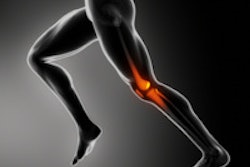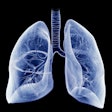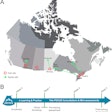Dr. Manel Limeme, of Farhat Hached Hospital in Sousse, and colleagues compared the performance of sonography and conventional radiography for detecting erosions in the metacarpophalangeal joints in patients with rheumatoid arthritis. The study included 40 patients; both hands of each patient were evaluated, for a total of 960 joints. Limeme's group rated each patient's synovitis using clinical examination and B-mode and power Doppler ultrasound, and they recorded sites of erosion using x-ray and ultrasound.
Concordance between clinical joint examination and ultrasound was low at the metacarpophalangeal joints and the wrists, according to the researchers. B-mode and power Doppler found 350 more incidences of synovitis than clinical examinations and up to 228 more incidences at the metacarpophalangeal joints. Sonography detected 127 definite erosions in 56% of the patients, compared with radiographic detection of 32 erosions (26% of which coincided with sonographic erosions) in 17% of the patients.
The findings confirm that ultrasound evaluation of changes in the joints of the hand is useful for diagnosing and staging rheumatoid arthritis -- especially for patients with early disease, the group concluded.




















